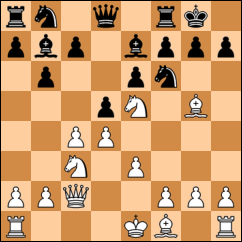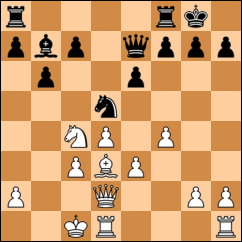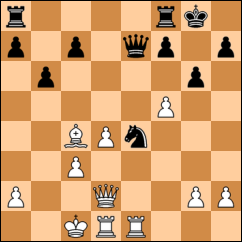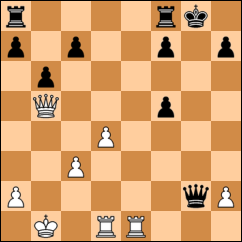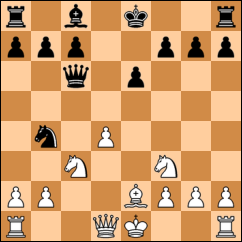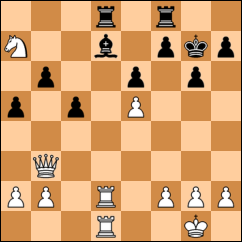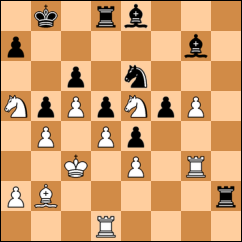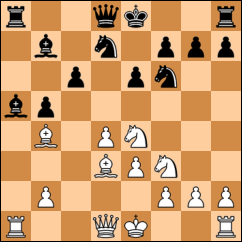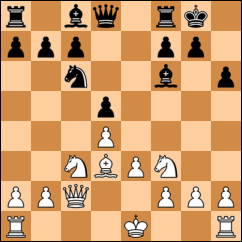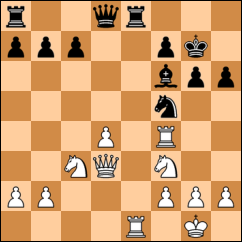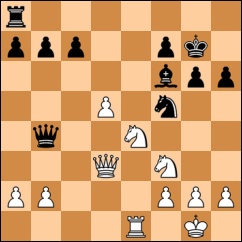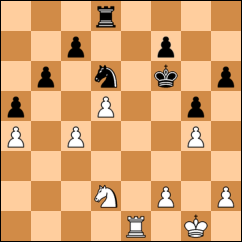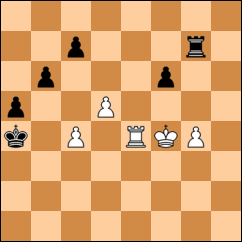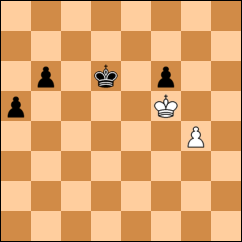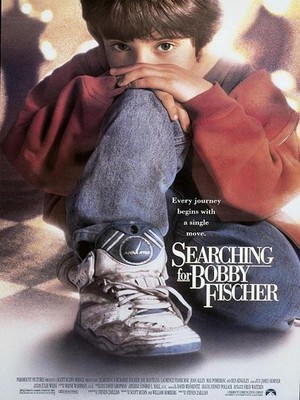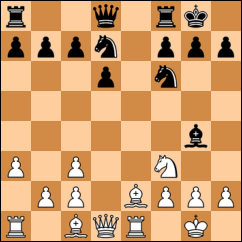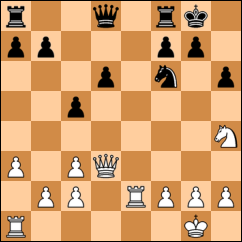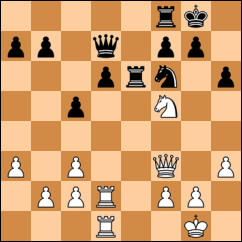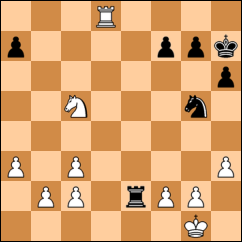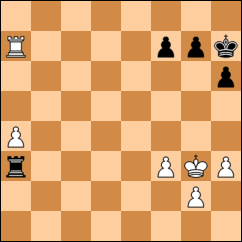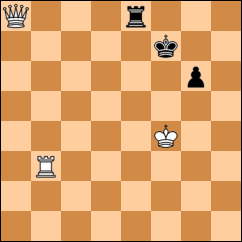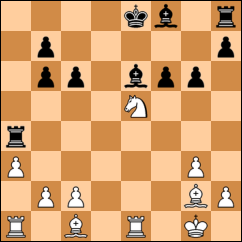W.Engel–S.McWhirter
Route 20 Chess Club
Freeport, Ill., Sept. 28, 2010
1.d4 d5 2.c4 e6 3.Nf3 Nf6 4.Bg5 Be7 5.e3 0-0 6.Nc3 b6?
The first slip in a slightly offbeat but otherwise accurate Queen's Gambit Declined. Better is 6...h6 or 6...Nbd7, since Will has raised the issue of a minor piece trade on f6.
7.Qc2 Bb7 8.Ne5
8...dxc4 9.Nxc4 Nc6 10.f4 Nd5
Thanks to his decision to fianchetto the queen's bishop, Steve has an interesting and potentially powerful rushing play in 10...Nb4!? 11.Qe2 Ne4, with the likely continuation 12.Bxe7 Qxe7 13.Nxe4 Bxe4.
11.Bxe7 Qxe7 12.0-0-0
A risky choice: Will castles his king onto a half-open file on the side of the board where all the action is. Steve seizes the moment.
12...Ncb4 13.Qd2 Nxc3 14.bxc3 Nd5 15.Bd3?!
Danger! All Steve has to do is kick Will's knight off c4 with 15...b5!, then come barreling in with 16...Qa3+, and at a minimum he wins a pawn, possibly two, and Will's king is out in the great open spaces where cats are cats.
15...g6??
Steve misses his moment, and Will has a chance to rebound.
16.e4 Nf6 17.Rhe1 Ba6
Steve's rooks are not looking especially active. 17...Rfd8 is one solution to that.
18.f5 Bxc4 19.Bxc4 exf5 20.exf5 21.Ne4
21.Qb2
Now it's Will's turn to miss an opportunity: Without careful replies, 21.Bd5!? wins material. Black can avoid the worst with 21...Qa3+ 22.Qb2 Qxc3+ 23.Kb1 (23.Qxc3 Nxc3 24.Bxa8 Nxd1 25.Bc6 Nf2) 23...gxf5 24.Bxa8 Rxa8 25.Rc1, where black loses the exchange but wins two pawns. With 21...gxf5, black gets only one pawn in compensation.
21...Qg5+ 22.Kb1 Nd6
Steve can't play 22...Qxf5? because of 23.Bd3 Rae8 24.Qc2, which can only be resolved by 24...Nxc3+ 25.Qxc3. This leaves him down a bishop for two pawns, and Will has the initiative.
23.Bd3 Nxf5 24.Qb5 Qxg2??
This move leaves Steve's knight underdefended. Will wins a pawn, and Steve's king loses its cover. Much better is to slam the door in the queen's face with 24...c5, then answer 25.Re5 with 25...Qg4, threatening to seize Will's other rook (25...cxd4 is inferior, because the threat against the knight is renewed: 26.Bxf5 gxf5 27.Rxf5).
25.Bxf5 gxf5??
Steve is in fact better off letting the bishop live and grabbing a free pawn with 25...Qxh2 instead; if 26.Be4 then 26...Rae8. Will's pieces are more active by far, but at least material is equal. Here Steve seems to be two pawns up, but the removal of his king's cover leaves him tragically vulnerable . . .
26.Rg1 1-0
Even after 26...Qg6 27.Qxf5 Rae8, Steve's queen is on life support. 28.h4 Kh8 29.Rxg6 pulls the plug.

